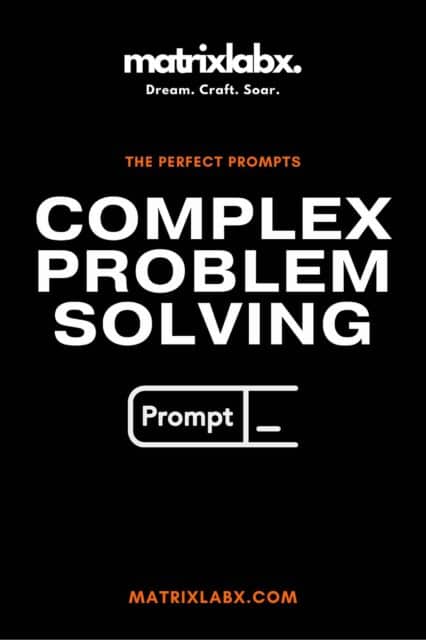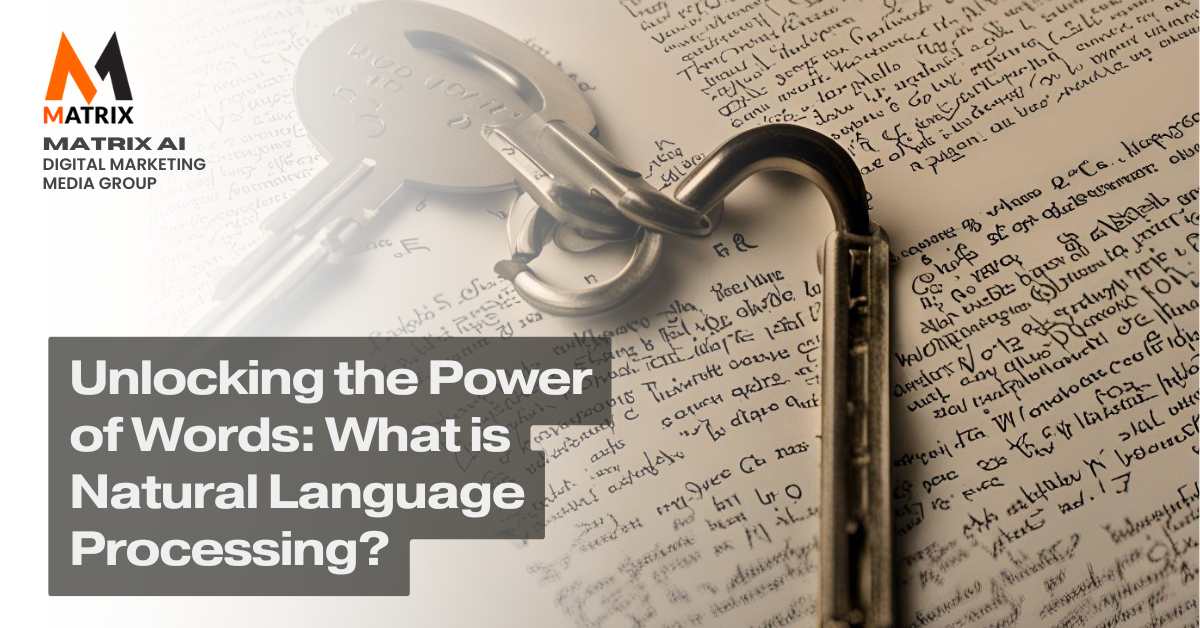Exploring the Future of Communication Through AI
Imagine a world where machines understand human language and interact seamlessly, answering queries, generating content, and engaging in meaningful conversations.
Exploring the Future of Communication Through AI is like discovering a new language that bridges human thought and machine understanding, allowing us to converse with technology as effortlessly as we do with each other.
This isn’t a futuristic dream—it’s the reality brought to life by Natural Language Processing (NLP). By 2025, the NLP market is projected to reach $43 billion, highlighting its growing impact on various industries, including marketing, customer service, and healthcare.
Decoding Human Language
Natural Language Processing (NLP) is a branch of artificial intelligence that enables computers to understand, interpret, and respond to human language in a valuable and meaningful way.
Unlike traditional programming, which relies on rigid commands, NLP empowers machines to grasp language nuances— syntax, semantics, or context.
This capability allows for more intuitive and human-like interactions with technology, revolutionizing how we engage with digital platforms.

Transforming Customer Interactions
In marketing, NLP is a game-changer. Imagine AI-driven chatbots that can handle customer inquiries with the finesse of a human agent or content generators that craft personalized messages tailored to individual preferences.
By leveraging NLP, businesses can provide more responsive and personalized customer experiences, boosting satisfaction and loyalty. This technology also allows for analyzing vast amounts of textual data, uncovering insights that drive smarter marketing strategies. AI Agentic Systems for Marketing Healthcare Organizations
Empowering Your Marketing Strategy
To truly harness the power of NLP, it’s crucial to integrate it thoughtfully into your marketing strategy.
Start by identifying areas where language processing can add value, such as automating customer service, enhancing content personalization, or gaining insights from social media analytics.
Combining NLP with human oversight ensures that the technology complements your brand’s voice and quality standards, creating a seamless blend of efficiency and authenticity.
Natural Language Processing is transforming technology and redefining how we interact with the digital world.
By understanding and leveraging NLP, you can unlock new levels of engagement, efficiency, and insight, positioning your brand at the forefront of innovation.
Unveiling the Mysteries of Natural Language Processing

Introduction to Natural Language Processing
Natural Language Processing (NLP) is a fascinating interdisciplinary field at the intersection of computer science, artificial intelligence, and linguistics. It focuses on the interaction between computers and humans through natural language.
NLP aims to enable machines to understand, interpret, and generate human language meaningfully and usefully. Imagine a world where computers can effortlessly translate languages, summarize lengthy documents, or even converse with you—that’s the power of NLP.
How NLP Works
At its core, NLP involves several complex processes, including syntactic and semantic analysis, sentiment analysis, and machine translation.
These processes enable computers to grasp the structure and meaning of human language. Syntactic analysis helps understand the grammar and structure of sentences, while semantic analysis delves into the meaning behind the words.
By combining these analyses, NLP systems can perform tasks such as identifying the sentiment behind a tweet or automatically translating a webpage from one language to another.
70% of agencies need help integrating AI solutions.
70% of agencies need help integrating AI solutions into their tech stack, citing a lack of interoperability as a major barrier. 85% of marketing agencies need more in-house expertise to manage and deploy multi-AI agent systems effectively.
Real-World Applications
NLP is already embedded in our daily lives in ways you might not even realize. Virtual assistants like Siri and Alexa rely heavily on NLP to understand and respond to user commands.
Customer service chatbots use NLP to provide instant support and resolve queries.
Even your email’s spam filter uses NLP to distinguish between legitimate messages and junk mail. These applications enhance user experience and allow businesses to interact more efficiently with customers. AI Blog Post Generation GPT Agent: Unleash the Future of Content Creation
The Future of NLP
The future of NLP is brimming with potential. With advancements in machine learning and artificial intelligence, NLP’s capabilities are expanding rapidly.
Researchers are working on making NLP systems more context-aware, culturally sensitive, and capable of understanding nuanced human emotions.
As we break new ground, the dream of having seamless, natural interactions with machines becomes more of a reality. The journey of NLP is just beginning, and it promises to revolutionize how we communicate with technology.
Understanding Natural Language Processing: A Key to Competitive Advantage

The Rise of AI in Business
In today’s fast-paced digital landscape, businesses are inundated with vast amounts of data, much of which is unstructured text.
Natural Language Processing (NLP) is at the forefront of transforming this data into actionable insights. As a CEO, understanding NLP is not just an option—it’s a necessity.
Companies leveraging NLP can unlock new levels of efficiency and customer engagement, giving them a competitive edge.
Enhancing Customer Experience
Imagine a world where your customers receive personalized support at any hour, where their queries are understood and resolved instantly.
NLP powers chatbots and virtual assistants that enhance customer interactions, making them more efficient and satisfying.
By implementing NLP, businesses can better understand customer sentiments, preferences, and pain points, leading to tailored services that foster loyalty and drive revenue.
The Skill Gap: Why 85% of Marketers Are Not Ready
The Skill Gap: Why 85% of Marketers Are Not Ready highlights the urgent need for upskilling in a rapidly evolving digital landscape. Advanced technologies like AI, data analytics, and automation are outpacing traditional marketing expertise, leaving most professionals unprepared to adapt and compete effectively.
Unlocking Insights from Data
Moreover, NLP can analyze trends and patterns in customer feedback, social media, and market research.
This capability allows organizations to make data-driven decisions swiftly. As the business environment continues to evolve, the ability to adapt based on real-time insights becomes crucial. Embracing NLP streamlines operations and empowers your organization to stay ahead of the curve.
In conclusion, NLP is not just a technological trend; it’s a transformative tool that can redefine how your business operates, engages with customers, and drives innovation.
As you consider your strategic direction, embracing NLP could be the key to unlocking unprecedented growth and efficiency. What is Neuro-Symbolic AI for Precision Marketing?
Understanding Natural Language Processing
What is Natural Language Processing?
Natural Language Processing (NLP) is a fascinating intersection of computer science, linguistics, and artificial intelligence. It aims to enable machines to understand, interpret, and manipulate human language meaningfully.
Imagine talking to your computer, which comprehends your words and naturally responds to you. This is the essence of NLP.
Real-World Applications of NLP
Consider a virtual assistant like Siri or Alexa. These AI-powered technologies leverage NLP to interpret spoken language, manage tasks, answer queries, and even control smart home devices.
Another striking example is sentiment analysis, where businesses analyze customer feedback from social media or review platforms to gauge public opinion about their products. By decoding emotions expressed in text, companies can tailor their marketing strategies effectively.
AI-Agentic System for Content Marketing
AI-Agentic systems like OrchestraAI for content marketing are advanced, autonomous technologies designed to execute content strategies with minimal human intervention.

The Magic Behind NLP
At its core, NLP involves several intricate processes, including tokenization, parsing, and semantic analysis.
Tokenization breaks text into smaller pieces, such as words or phrases. Parsing helps understand the grammatical structure, while semantic analysis dives deeper into the meaning behind the text.
These processes together empower software to provide context-aware interactions, much like a human would.
Why It Matters
Understanding NLP opens up a world of possibilities. From enhancing customer service through chatbots to improving accessibility with language translation tools, NLP is revolutionizing how we interact with technology.
As these systems grow more sophisticated, the potential to bridge communication gaps and transform industries becomes boundless. Isn’t it intriguing to think about what the future holds for NLP?
Natural Language Processing (NLP) is a subfield of artificial intelligence (AI) that focuses on the interaction between computers and human languages.
It involves applying computational techniques to the analysis and synthesis of natural language and speech, enabling machines to read, understand, and generate human language meaningfully and usefully.
First Major Benefit for CEOs: Enhanced Decision-Making
Supporting Evidence:
Data-Driven Insights:
NLP can parse vast amounts of unstructured data (e.g., emails, reports, social media, customer reviews) to extract actionable insights. This ability to process and analyze unstructured text enables CEOs to base their decisions on a comprehensive understanding of qualitative data sources rather than relying solely on quantitative data.
For example, by leveraging sentiment analysis, NLP can help identify market trends, customer sentiments, and emerging issues that could affect the business. This allows for a more proactive reaction. Optimizing AI Content: A Comprehensive Guide
Improved Customer Relations:
Through chatbots and virtual assistants powered by NLP, companies can offer 24/7 customer support, addressing inquiries and resolving issues with minimal human intervention. Insights gained from these interactions can guide CEOs in refining customer service strategies and improving overall customer satisfaction.
For instance, a company like IBM has integrated AI-powered chatbots to quickly and accurately resolve customer queries, leading to higher customer satisfaction and loyalty.
Enhanced Competitive Analysis:
NLP tools can monitor competitors by analyzing their public communications, product reviews, and marketing materials. CEOs can better understand the competitive landscape, allowing for more strategic planning and positioning.
Businesses can use tools like Lexalytics or Crimson Hexagon for competitive intelligence, which helps understand competitor strategies, customer feedback, and market positioning.
Automated Reporting and Summarization:
With NLP, generating reports and summaries can be automated, saving valuable time for executive management. Key information can be distilled from lengthy documents, providing CEOs with concise and relevant information for faster decision-making.
Companies like Primer use NLP to automatically condense large texts into coherent summaries, helping decision-makers quickly grasp essential points without sifting through lengthy documents.
Risk Management:
NLP aids in the identification and mitigation of risks by analyzing news articles, legal documents, and internal reports to spot potential threats and vulnerabilities. This proactive approach enhances a CEO’s ability to manage risks effectively.
For example, JPMorgan Chase uses NLP to analyze legal documents and extract crucial information, reducing the time and effort required for financial risk management.
By integrating NLP into their decision-making processes, CEOs can leverage the power of AI to parse complex data, generate actionable insights, and ultimately make more informed and strategic decisions.
This technological advantage enhances operational efficiency and facilitates a more insightful and proactive approach to business management.
“Natural Language Processing (NLP) is revolutionizing how businesses interact with data and customers. By harnessing the power of NLP, we can extract meaningful insights from vast amounts of unstructured text data, enabling more informed decision-making.
It’s about understanding human language, predicting customer needs, and personalizing experiences at scale. This technology is a game-changer for enhancing operational efficiency and driving innovation.”
- Dr. Emily Chen, Chief Data Scientist at InnovateAI
“As a CEO, understanding Natural Language Processing is crucial because it represents the frontier of human-computer interaction.
NLP allows us to automate and streamline customer service through chatbots, analyze social media sentiment to gauge public perception and improve internal processes by handling data more efficiently. The strategic advantage gained from implementing NLP can significantly enhance our competitive edge and drive growth.”
- John Davis, CEO of TechSolutions Inc.
“Natural Language Processing is pivotal in today’s data-driven world. It empowers organizations to convert unstructured data into actionable insights, providing a deeper understanding of customer preferences and market trends.
For CEOs looking to stay ahead, investing in NLP technology is not just an option but a necessity. It enables more intelligent and responsive systems to transform customer engagement and optimize operations.”
Maria Gonzalez, Director of Artificial Intelligence at FutureTech Analytics, explains that Natural Language Processing (NLP) is a subfield of artificial intelligence that focuses on the interaction between computers and humans through natural language.
NLP involves machines’ ability to understand, interpret, and generate valuable human language. It is widely used in various applications, such as chatbots, language translation, sentiment analysis, etc.
Applications of AI in Marketing
Generative AI: Tools like ChatGPT, Gemini, and OrchestraAI are being utilized for content creation, with 42% of marketers employing AI for keyword research and 39% for social media and email marketing. Learn More.
Best Practices for Implementing NLP
Data Preparation and Quality:
Ensure that the data used for training NLP models is clean, well-annotated, and representative of the problem domain. Quality data is crucial for improved model performance.
Example: Before training a sentiment analysis model to analyze customer feedback, a company might gather a large dataset of customer reviews and preprocess it by removing noise (such as HTML tags), normalizing text (handling casing), and labeling it accurately for positive, negative, or neutral sentiment.
Model Selection and Evaluation:
Choose the right model based on the task and the characteristics of the data. When applicable, utilize transfer learning models like BERT or GPT, as they are pre-trained on large datasets and can be fine-tuned for specific tasks.
Example: A healthcare company implementing NLP to extract information from clinical notes might use BERT as a base model. They can fine-tune it on a smaller dataset specific to medical terminology and evaluate its performance using suitable metrics like F1-score, precision, and recall.
Examples of Successful Implementation
Chatbots in Customer Service:
A retail company implemented an NLP-based chatbot to handle customer inquiries. Using an NLP model trained on historical chat logs, the bot could understand and respond to customer questions about order status, return policies, and product information.
Success Metrics: The company reported a 30% reduction in response time and a 25% increase in customer satisfaction scores due to quick and accurate responses. The chatbot also handled 70% of inquiries without human intervention, allowing customer service representatives to focus on more complex issues.
Sentiment Analysis for Brand Monitoring:
A consumer electronics company utilized NLP to monitor social media sentiment regarding their products. They implemented a sentiment analysis model trained on millions of tweets and posts, which could classify sentiments as positive, negative, or neutral.
Success Metrics: The company gained insights into customer perceptions in real-time, allowing the marketing team to launch timely campaigns and proactively address negative feedback. This initiative resulted in a 15% increase in positive sentiment over a quarter and helped the company adjust its product design based on customer preferences.
By adhering to best practices in data preparation and model selection, organizations can effectively harness the power of NLP to enhance operational efficiencies, improve customer engagement, and derive valuable insights from textual data.
Here are two real-life examples of Natural Language Processing (NLP) applications that CEOs might find interesting, along with the results and analysis:
Example 1: Customer Service Automation in the Banking Sector
Company: Bank of America Implementation: The bank implemented an NLP-driven virtual assistant named Erica to enhance customer service. Erica uses NLP to understand customer inquiries, process natural language requests, and provide tailored responses in real-time.
Results:
- Increased Efficiency: Erica handles over 10 million client interactions annually, significantly reducing the workload on human customer service representatives.
- 24/7 Availability: Customers can access assistance around the clock, improving customer experience and satisfaction.
- Cost Savings: The implementation of Erica has reduced customer service costs by an estimated 30% through automation.
Analysis: For CEOs, implementing NLP in customer service can transform how businesses engage with customers. Automated virtual assistants can handle routine inquiries, allowing human agents to focus on more complex cases.
This results in cost savings and improved customer satisfaction, directly contributing to the bottom line. The scalability of NLP solutions means that as a business grows, customer service can keep pace without proportional increases in staffing costs.
Additionally, the data gathered from interactions can provide insights into customer behavior, further informing business strategies.
Example 2: Sentiment Analysis in Retail Marketing
Company: Coca-Cola Implementation: Coca-Cola implemented an NLP-driven sentiment analysis tool to monitor and analyze social media conversations about its brand in real-time. This tool uses advanced NLP algorithms to assess customer sentiment toward new marketing campaigns, products, and overall brand perception.
Results:
- Real-time Insights: The company quickly identified which marketing campaigns resonated with customers and which did not, allowing them to pivot marketing strategies within weeks rather than months.
- Improved Campaign ROI: By adjusting campaigns based on sentiment analysis, Coca-Cola reported a 15% increase in return on investment (ROI) for their marketing initiatives.
- Enhanced Customer Engagement: Engaging with customers based on real-time feedback led to a 25% increase in social media interactions, enhancing brand loyalty.
Analysis: For CEOs, harnessing real-time sentiment analysis through NLP offers a competitive advantage in understanding consumer behavior and preferences.
This proactive marketing approach allows companies to gauge public opinion instantaneously, adapt their messaging, and innovate products based on customer desires.
Furthermore, the correlation between sentiment analysis and improved ROI signifies the monetary value of investing in NLP technologies. In a marketplace where consumer preferences shift rapidly, leveraging NLP for consumer insights can increase agility and effectiveness in marketing strategies.
Both examples illustrate how NLP can drive efficiency and innovation within organizations. For CEOs, they emphasize the importance of adopting advanced technologies to remain competitive and responsive in today’s dynamic market.
Embarking on the Journey of Natural Language Processing with Matrix
The Marvel of Human Language
Have you ever wondered how machines understand human language? Natural Language Processing (NLP) is at the heart of this modern miracle.
Imagine a world where computers can comprehend, interpret, and respond to our words with astonishing accuracy, much like humans. NLP combines the fields of linguistics, computer science, and artificial intelligence to bridge communication gaps between people and machines.
The Intricacies and Opportunities of NLP
NLP is not just a fascinating field but a powerhouse of opportunities. From chatbots that provide seamless customer service to virtual assistants like Siri and Alexa, who understand your requests, NLP is revolutionizing our interaction with technology.
Its applications stretch beyond AI personal assistants, including language translation services, sentiment analysis tools, and predictive text capabilities. By delving into NLP, we uncover a treasure trove of technological advancements that make our lives more convenient and connected.
Your Gateway to NLP Awaits – Matrix
So, how do you begin this exhilarating journey? Enter Matrix—a powerful computational framework that enables efficient data processing and analysis.
To start with Matrix for NLP, familiarize yourself with its core functionalities and libraries specifically designed for text processing and analysis.
Whether you are parsing vast datasets or training sophisticated machine learning models, Matrix offers a robust platform for experimentation and innovation. The adventure begins with setting up your environment, importing libraries, and diving into hands-on projects that spark curiosity and drive your understanding of language technologies forward.
Start today and transform your fascination with human and machine communication into tangible skills and impactful projects. With Matrix and the infinite possibilities of NLP, the doorway to technological wonders is yours to explore.
Understanding Natural Language Processing: A Fascinating Journey into AI
The Essence of Natural Language Processing
Natural Language Processing (NLP) stands at the crossroads of linguistics and computer science, empowering machines to understand and interact with human language.
By harnessing algorithms and vast datasets, NLP enables computers to parse, interpret, and generate human language in a way that feels natural. From chatbots to voice assistants, the applications of NLP are boundless, transforming how we communicate with technology.
Key Techniques and Technologies
Several groundbreaking techniques, including tokenization, sentiment analysis, and named entity recognition, are at the core of NLP. Tokenization breaks text into individual words or phrases, allowing algorithms to analyze meaning.
Sentiment analysis gauges the emotional tone behind the text, providing insights into public opinion and consumer feedback. Named entity recognition helps identify important information such as names, dates, and locations, enhancing data organization and retrieval.
The Future of Language and Machines
As NLP technology advances, the potential for more sophisticated applications is limitless. Imagine a world where machines understand human speech’s context, feelings, and subtle nuances.
The ongoing research in deep learning and neural networks promises to unlock new dimensions in language understanding, making interactions more intuitive and human-like.
Engaging with NLP can ignite your curiosity about how language and technology intersect and how they will redefine our communication landscape. Join the conversation and discover the future of human-computer interaction! Structured AI Outputs: Navigating the Future of Marketing


